Cults

Sphere Surface Dissection, Baseball, Tennis Ball, Math
by Cults
Last crawled date: 6 years, 1 month ago
Printing Advice: Please use support and raft.
Looking at a baseball or a tennis ball, one wonders how to cut a spherical surface into two equal pieces. There are certainly many ways to do it, taking advantage of the spherical symmetries. Scott Elliot has some nice OpenScad code that performs such a dissection. I am looking at the project from a K-12 educational perspective. How can one dissect a spherical surface in Fusion 360 or similar 3D CAD environment?
Well, it turns out to be an appealing effort on Fusion 360, after a bit of mathematical tweaking. We can start with a hollow sphere (the result of subtracting two concentric spheres) and a cube of equal dimensions. After centering the hollow sphere and the cube, we can sketch a circle on a cube surface, whose diameter needs to be such that, if we were to make another circle of the same diameter on another orthogonal cube surface, the two circles are tangent to each other in space. A bit of algebra with the help of old Pythagoras leads to the conclusion: the circle diameter is the diameter of the outer sphere/ sqrt(2). This itself is an interesting math project for middle and secondary students.
Indeed, we need only half of that circle, plus two tangent lines for a “U” curve. Using the U curve, we could split the sphere into two pieces. These two pieces have the same outer surface, but are not exactly the same, because of the thickness. Take the half with an even thickness, construct a plane along the edge curve, sketch a 45-degree right triangle, and then perform a sweep cut along the whole path around the opening. Now, we have one half of the spherical surface (with some thickness). It takes two to make a hollow ball.
This should be an intermediate design project for 6-16 students with some guidance, as presented above. Have fun and try to come up another way to do it!
References:
A brief history of the baseball. https://www.smithsonianmag.com/arts-culture/a-brief-history-of-the-baseball-3685086/
Baseball. https://en.wikipedia.org/wiki/Baseball_(ball)
Elliot, Scott (2010). OpenScad code for spherical bisection, available at https://www.thingiverse.com/thing:3068/#files
Gardner Martin. (2001). The colossal book of mathematics. New York, NY: W. W. Norton & Co.
Looking at a baseball or a tennis ball, one wonders how to cut a spherical surface into two equal pieces. There are certainly many ways to do it, taking advantage of the spherical symmetries. Scott Elliot has some nice OpenScad code that performs such a dissection. I am looking at the project from a K-12 educational perspective. How can one dissect a spherical surface in Fusion 360 or similar 3D CAD environment?
Well, it turns out to be an appealing effort on Fusion 360, after a bit of mathematical tweaking. We can start with a hollow sphere (the result of subtracting two concentric spheres) and a cube of equal dimensions. After centering the hollow sphere and the cube, we can sketch a circle on a cube surface, whose diameter needs to be such that, if we were to make another circle of the same diameter on another orthogonal cube surface, the two circles are tangent to each other in space. A bit of algebra with the help of old Pythagoras leads to the conclusion: the circle diameter is the diameter of the outer sphere/ sqrt(2). This itself is an interesting math project for middle and secondary students.
Indeed, we need only half of that circle, plus two tangent lines for a “U” curve. Using the U curve, we could split the sphere into two pieces. These two pieces have the same outer surface, but are not exactly the same, because of the thickness. Take the half with an even thickness, construct a plane along the edge curve, sketch a 45-degree right triangle, and then perform a sweep cut along the whole path around the opening. Now, we have one half of the spherical surface (with some thickness). It takes two to make a hollow ball.
This should be an intermediate design project for 6-16 students with some guidance, as presented above. Have fun and try to come up another way to do it!
References:
A brief history of the baseball. https://www.smithsonianmag.com/arts-culture/a-brief-history-of-the-baseball-3685086/
Baseball. https://en.wikipedia.org/wiki/Baseball_(ball)
Elliot, Scott (2010). OpenScad code for spherical bisection, available at https://www.thingiverse.com/thing:3068/#files
Gardner Martin. (2001). The colossal book of mathematics. New York, NY: W. W. Norton & Co.
Similar models
thingiverse
free

Sphere Surface Dissection, Baseball, Tennis Ball, Math by lgbu
...one dissect a spherical surface in fusion 360 or similar 3d cad environment? well, it turns out to be...
thingiverse
free

Sphere Dissection, Trisection, Three-Piece Puzzle by lgbu
...r of 25mm. the critical dissecting point is a centroid in this case.
have fun!
see also
https://www.thingiverse.com/thing:2995638
cults
free

Cube/Sphere Dissection, Kawai Tsugite Style, Cube Joint, Math Puzzle
...t.html
bu, l. https://www.maa.org/press/periodicals/convergence/exploring-liu-hui-s-cube-puzzle-from-paper-folding-to-3-d-design
thingiverse
free

Cube/Sphere Dissection, Kawai Tsugite Style, Cube Joint, Math Puzzle by lgbu
....html
bu, l. https://www.maa.org/press/periodicals/convergence/exploring-liu-hui-s-cube-puzzle-from-paper-folding-to-3-d-design
thingiverse
free

Sphere Trisection / Dissection, Reid Dissection by lgbu
... if necessary, please add some support. alternatively, it can be rotated and then printed with support for the spherical bottom.
thingiverse
free

Cube Sphere - Great Circle
...rop the sphere in the cube and draw a circle around the edge. works with any orientation.
change the diameter to suit your size.
3dwarehouse
free

sphere
...sphere
3dwarehouse
yes, a sphere #ball #baseball #basketball #soccer #sphere #tennis
grabcad
free

Cube two...
...st the grippers expect magnet grippers
3d printed - hollow - 2mm wall thickness to save material
thank you for viewing my model
thingiverse
free

Hollow Demi-sphere by VeryWetPaint
... a hollow cavity when assembled. this is derived from the same basic openscad script as my previous hemi-demi-sphere submission.
cg_trader
$2

Perfect Sphere
...perfect sphere
cg trader
perfect sphere made by mathematical equation shapes sphere math circle shape science other
Dissection
turbosquid
$300

rudbeckia dissected
...d model rudbeckia dissected for download as max, obj, and fbx on turbosquid: 3d models for games, architecture, videos. (1182363)
turbosquid
$460

flowerbed of rudbeckia dissected
...rbed of rudbeckia dissected for download as max, obj, and fbx on turbosquid: 3d models for games, architecture, videos. (1182360)
turbosquid
$200

Human Heart Dissection Detailed
...uman heart dissection for download as ma, obj, fbx, and blend on turbosquid: 3d models for games, architecture, videos. (1361664)
turbosquid
$150

Human Skin Detailed Dissection
...n detailed dissection for download as ma, obj, fbx, and blend on turbosquid: 3d models for games, architecture, videos. (1366704)
turbosquid
$190

Male and Female Reproductive System Dissection
...ive system dissection for download as ma, obj, fbx, and blend on turbosquid: 3d models for games, architecture, videos. (1371212)
3d_export
$179

Anatomy Dissection laboratory
...nimum of polygons -scene fully configured and ready to render. -no photoshop on the preview -scene for 3ds max 2012 and v-ray 2.0
3d_export
$249

Human Anatomy Dissection Laboratory
...e made carefully with a minimum of polygons > -scene fully configured and ready to render. > -no photoshop on the preview.
3d_export
$15

Autopsy Table Roll-In with Down-Draft-System
...table roll-in with down-draft-system 3dexport autopsy table roll-in with dissection table professional autopsy tables with integrated exhaust system serve...
3d_export
$144

kaws flayed companion
...ave mirror modifiers and share the same uv coordinates (2500 verts each)<br>ready to visualization in cycles render engine.
3d_export
$97

kaws flayed lowpoly pbr
...maps. title is rendered in eevee, product pictures are rendered in cycles. ready for visualization in cycles/eevee render engine.
Math
3ddd
$1

Calligaris, Math
... calligaris , math
calligaris, math, журнальный столик
turbosquid
$1

Maths board
... available on turbo squid, the world's leading provider of digital 3d models for visualization, films, television, and games.
3d_export
$5

Maths chalk board 3D Model
...maths chalk board 3d model
3dexport
maths keyboard
maths chalk board 3d model shadowlight123 86223 3dexport
turbosquid
$10

Math Object 0036
...ty free 3d model math object 0036 for download as max and obj on turbosquid: 3d models for games, architecture, videos. (1171280)
turbosquid
$10

Math Object 0034
...ty free 3d model math object 0034 for download as max and obj on turbosquid: 3d models for games, architecture, videos. (1171247)
turbosquid
$10

Math Object 0025
...ty free 3d model math object 0025 for download as max and obj on turbosquid: 3d models for games, architecture, videos. (1170663)
turbosquid
$10

Math Object 0018
...ty free 3d model math object 0018 for download as max and obj on turbosquid: 3d models for games, architecture, videos. (1169695)
turbosquid
$10

Math Object 008
...lty free 3d model math object 008 for download as max and obj on turbosquid: 3d models for games, architecture, videos. (1169682)
turbosquid
$10

Math Object 0080
...e 3d model math object 0080 for download as max, obj, and stl on turbosquid: 3d models for games, architecture, videos. (1372468)
turbosquid
$10

Math Object 0078
...e 3d model math object 0078 for download as max, obj, and stl on turbosquid: 3d models for games, architecture, videos. (1372462)
Baseball
3d_ocean
$2

Baseball,bat
...baseball,bat
3docean
baseball bat
a high quality baseball bat.
3d_export
$5

Baseball bat
...baseball bat
3dexport
baseball bat
turbosquid
$9

Baseball
...d
royalty free 3d model baseball for download as obj and fbx on turbosquid: 3d models for games, architecture, videos. (1433349)
turbosquid
$10

baseball
...alty free 3d model baseball for download as 3ds, obj, and c4d on turbosquid: 3d models for games, architecture, videos. (1412694)
turbosquid
$6

Baseball
...free 3d model baseball for download as max, 3ds, fbx, and obj on turbosquid: 3d models for games, architecture, videos. (1535103)
turbosquid
$22

baseball
... available on turbo squid, the world's leading provider of digital 3d models for visualization, films, television, and games.
turbosquid
$13

Baseball
... available on turbo squid, the world's leading provider of digital 3d models for visualization, films, television, and games.
turbosquid
$10

Baseball
... available on turbo squid, the world's leading provider of digital 3d models for visualization, films, television, and games.
3d_ocean
$5

Baseball
...c4d cinema 4d cinema4d game ground sports thread threads usa vray vrayforc4d
modeled in c4d with vrayforc4d material and texture.
3d_ocean
$1

baseball bat 2
...baseball bat 2
3docean
baseball bat
a lowpoly baseball bat .
Tennis
3d_ocean
$3

Tennis Ball
...tennis ball
3docean
ball tennis tennis ball
a gorgeous red and yellow seamless tennis ball
turbosquid
$29

Tennis Racket and Tennis Ball
... available on turbo squid, the world's leading provider of digital 3d models for visualization, films, television, and games.
turbosquid
$15

Tennis
...oyalty free 3d model tennis for download as max, obj, and fbx on turbosquid: 3d models for games, architecture, videos. (1480642)
turbosquid
$30

Tennis
... available on turbo squid, the world's leading provider of digital 3d models for visualization, films, television, and games.
turbosquid
$12

TENNIS
... available on turbo squid, the world's leading provider of digital 3d models for visualization, films, television, and games.
3d_ocean
$10
![[Tennis series] Low-poly tennis court](/t/579509.jpg)
[Tennis series] Low-poly tennis court
... texture detail. it has the precise measurements of a real tennis court and net. the polygon count is just 856! all the elemen...
turbosquid
$98

Sports Tennis Girl Model with Tennis Court
... available on turbo squid, the world's leading provider of digital 3d models for visualization, films, television, and games.
3d_export
$19

tennis ball
...tennis ball
3dexport
3d_export
$12

tennis shoes
...tennis shoes
3dexport
turbosquid
free

Tennis Ball
...all
turbosquid
free 3d model tennis ball for download as max on turbosquid: 3d models for games, architecture, videos. (1482300)
Sphere
3ddd
$1
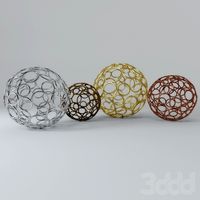
sphere
...sphere
3ddd
sphere for interior
archibase_planet
free

Spheres
...spheres
archibase planet
balls spheres
spheres - 3d model (*.gsm+*.3ds) for interior 3d visualization.
archibase_planet
free

Sphere
...sphere
archibase planet
globe sphere
sphere n151009 - 3d model (*.gsm+*.3ds) for interior 3d visualization.
3d_export
$5
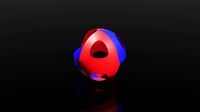
sphere
...sphere
3dexport
sfgsrybsrtfsz
turbosquid
$1

Sphere
...
turbosquid
royalty free 3d model sphere for download as max on turbosquid: 3d models for games, architecture, videos. (1235365)
3d_export
$5
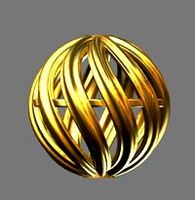
pendant sphere
...pendant sphere
3dexport
pendant sphere
3d_export
$5

pendant sphere
...pendant sphere
3dexport
pendant sphere
3d_export
$5
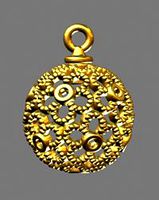
pendant sphere
...pendant sphere
3dexport
pendant sphere
3d_export
$5
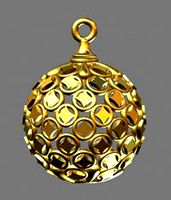
pendant sphere
...pendant sphere
3dexport
pendant sphere
3d_export
$5
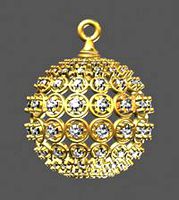
pendant sphere
...pendant sphere
3dexport
pendant sphere
Ball
turbosquid
$5
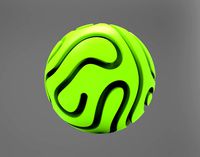
Ball on a Ball
...uid
royalty free 3d model ball on a ball for download as obj on turbosquid: 3d models for games, architecture, videos. (1484719)
archibase_planet
free
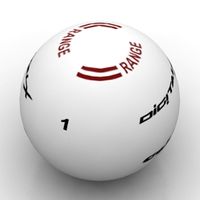
Ball
...ball
archibase planet
ball golf ball
ball - 3d model (*.gsm+*.3ds) for 3d visualization.
3d_export
$5
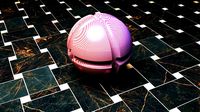
ball
...ball
3dexport
ball
archibase_planet
free

Ball
...ball
archibase planet
ball football soccer ball
ball n100714 - 3d model (*.gsm+*.3ds+*.max) for exterior 3d visualization.
3d_export
$5

ball
...ball
3dexport
soccer ball
archibase_planet
free
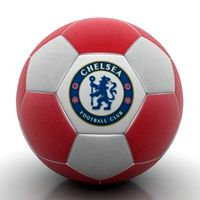
Ball
...ball
archibase planet
ball football
ball n100914 - 3d model (*.gsm+*.3ds+*.max) for 3d visualization.
3d_ocean
$5
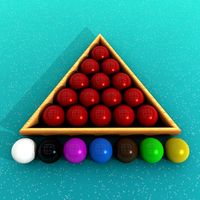
Snooker Balls
... set balls snooker snooker balls white ball yellow ball
set snooker balls format include : .c4d .3ds .obj build in cinema 4d r13
3d_export
free

ball
...ball
3dexport
this is 3d model ball's
3d_ocean
$2
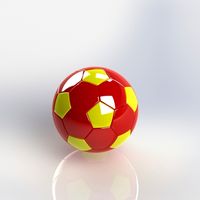
Soccer Ball
...soccer ball
3docean
ball red and yellow ball red ball soccer ball
a gorgeous red and yellow seamless soccer ball
3d_ocean
$5

Billard Balls
...low poly billiard balls. numbering from 1 to 15 plus the cue ball. each of the balls excluding the cue ball has a 4k texture map.
Surface
design_connected
$9
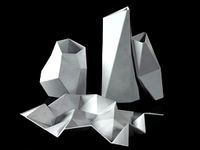
Surface
...surface
designconnected
rosenthal surface computer generated 3d model.
3d_export
$18
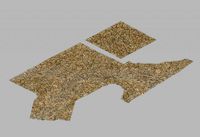
surface-cracked surface 27
...surface 27
3dexport
surface-cracked surface 27<br>max 2015 v-ray 3 max 2015<br>textures<br>all files in zip...
3d_export
$18
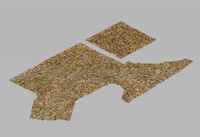
surface-cracked surface 27
...surface 27
3dexport
surface-cracked surface 27<br>max 2015 v-ray 3 max 2015<br>textures<br>all files in zip...
3d_export
$5
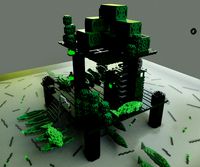
surface base
...surface base
3dexport
surface base
3ddd
$1

vibia fold surface
...vibia fold surface
3ddd
vibia fold surface , vibia
vibia fold surface
3d_export
$18
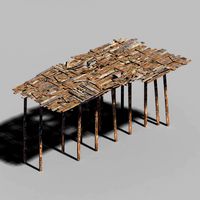
surface-yellow river dam-horizontal surface 03
...surface-yellow river dam-horizontal surface 03
3dexport
surface-yellow river dam-horizontal surface 03<br>3ds max 2015
3d_export
$18
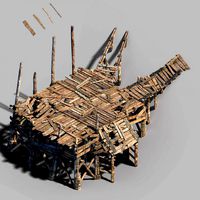
surface-yellow river dam-horizontal surface 01
...surface-yellow river dam-horizontal surface 01
3dexport
surface-yellow river dam-horizontal surface 01<br>3ds max 2015
3d_export
$10

surface book 2
...surface book 2
3dexport
surface book 2 laptop
3ddd
$1
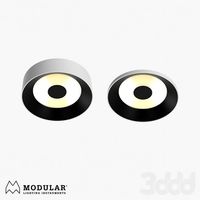
Modular Kurk Surface
...modular kurk surface
3ddd
modular
modular kurk surface
turbosquid
$38
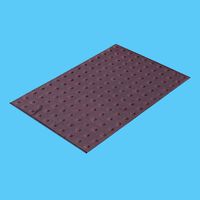
Barrier Surface
...ree 3d model barrier surface for download as ma, obj, and fbx on turbosquid: 3d models for games, architecture, videos. (1233275)
